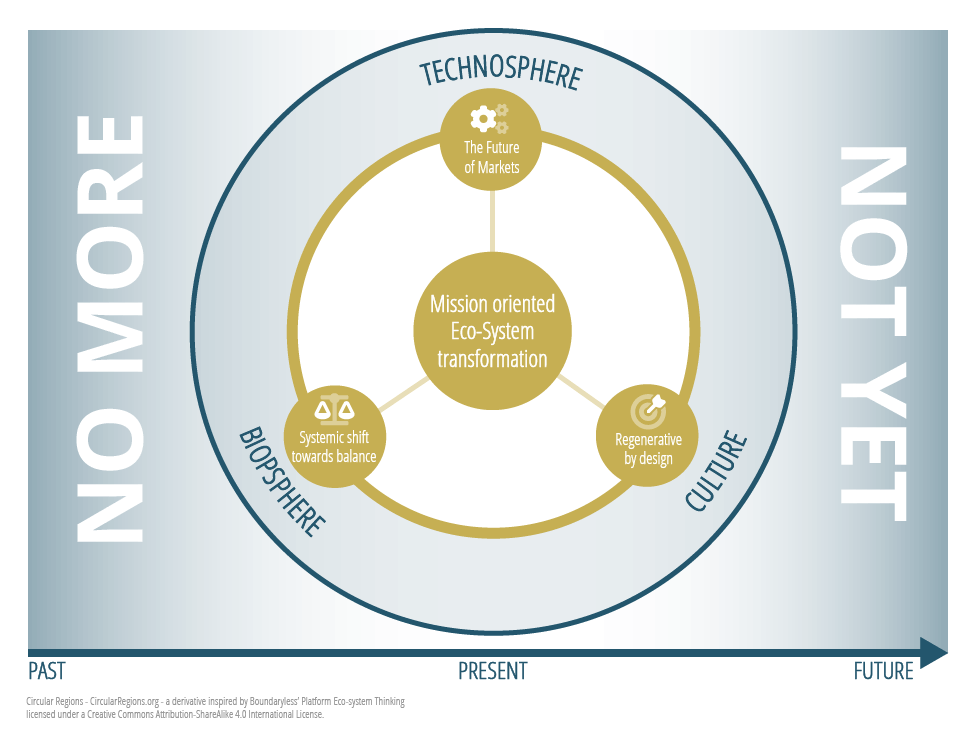BUILDING CAPACITY FOR INNOVATION AND SYSTEMS CHANGE
We need to
support all stakeholders
by bridging bottom-up and top-down solutions
work together
with radical collaboration via partnership methodologies
breakdown silos
with cross-sector solutions
understand the impact
Unlocking knowledge to collaboratively scale impact
Transition from NO MORE to NOT YET

Why?
Regions are defined by nature, culture, and history and the future of those regions are defined by people. Understanding the unique needs of these regions requires data that often is not aggregated or presented in a way that is easy to understand.
How?
Obtaining a detailed understanding of the Circular Economy in Regions, identify and connect stakeholders and stimulating opportunities, while implementing the technology to scale the impact.
- Identify the sectors where these initiatives are taking place,
- identify gaps,
- build on good examples,
- learn from practices and failures,
- develop an understanding of what the circular transition means for each sector,
- and explore potential cross-sector synergies and their common features.
- Policymakers (local, regional and national) with data on impacts, barriers and enablers,
-
Industry & SMEs seeking partners for innovative new solutions and identification of new business opportunities,
-
Networks and Clusters, Industrial Parks to unlock opportunities for their members
-
Public officials working to document and support the UN SDGs
-
Research & Academia working with on Circular and Carbon Neutral Business Models
-
NGOs to network and replicate identified impactful solutions and
-
Citizens able to support social equity, wellbeing, reduced material consumption and responsible production.
We are living in a globalised world with a population heading towards nine billion people, putting the earth’s resources under immense pressure. It is clear that the challenges and opportunities we face are large and complex. Our actions are linked with the actions of others, our solutions are embedded in a web of interlinked interests and responses, and we cannot work alone.

New approaches in how we use and share our resources and how we find solutions that function within the planetary boundaries require innovation. Moving from organisation-centric behaviours to mission-centric behaviours.
Creating a better world takes partnership and collaboration. Increasingly, government, industry, civil society, and science recognise the need to work together to tackle the challenges of the modern world and bring about change for the common good.
Many of the issues we confront and the opportunities we would like to explore are embedded in a network of changing social, economic, political, and environmental factors. And many different groups may be concerned with the same issues, but from a different perspective and with different interests.
In a world of interconnected economies, bringing about change depends on dialogue and alignment across different sectors in society. We need to foster relationships across these groups and help them collaborate. Although no one group can bring about change on its own, the power of one group can be enough to block the actions of others. To avoid this, we need to develop shared perspectives, new understanding, and collective commitment for action, even between groups who may at first seem to have diverging interests.
A Circular Economy can only be achieved by working together.
